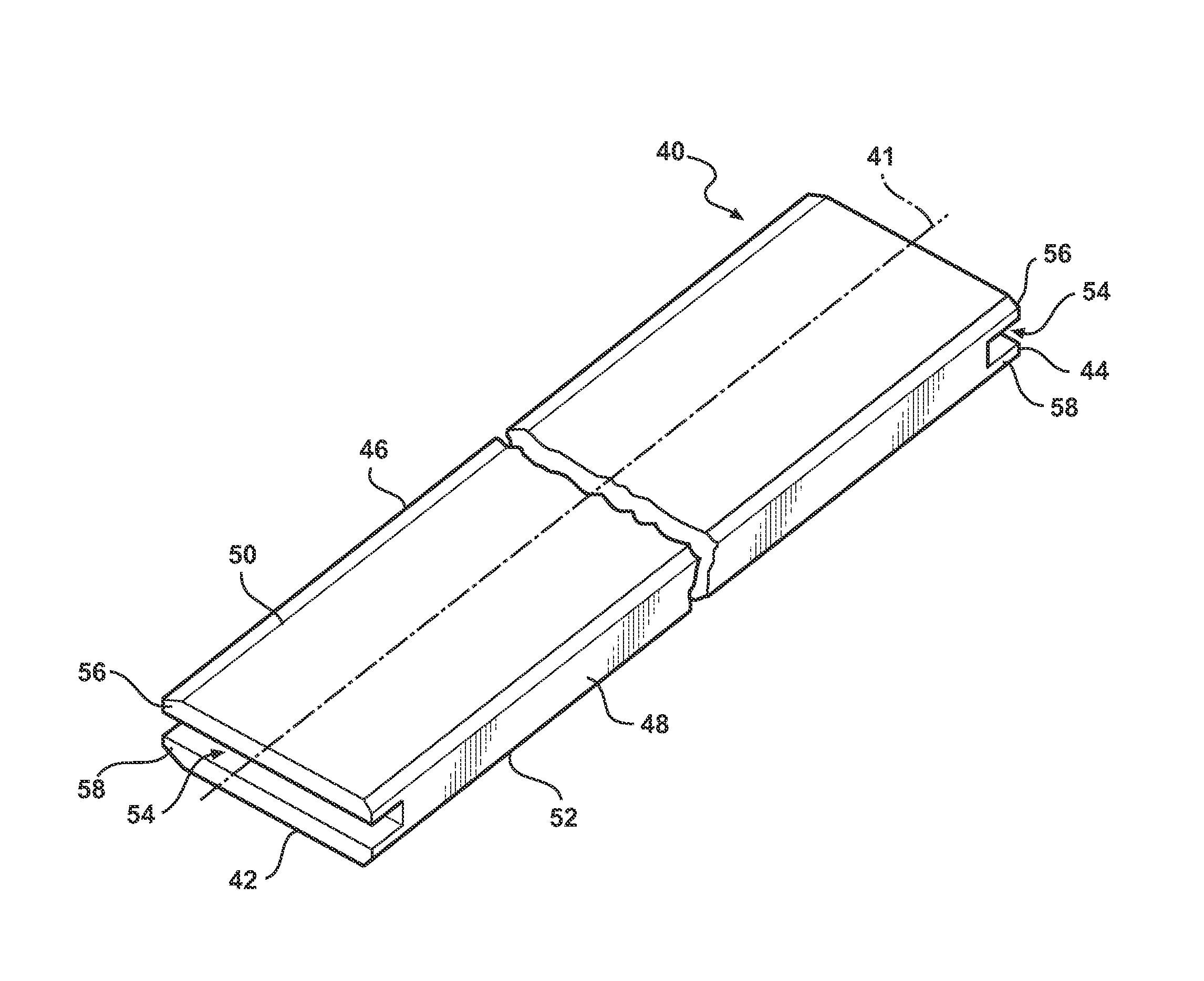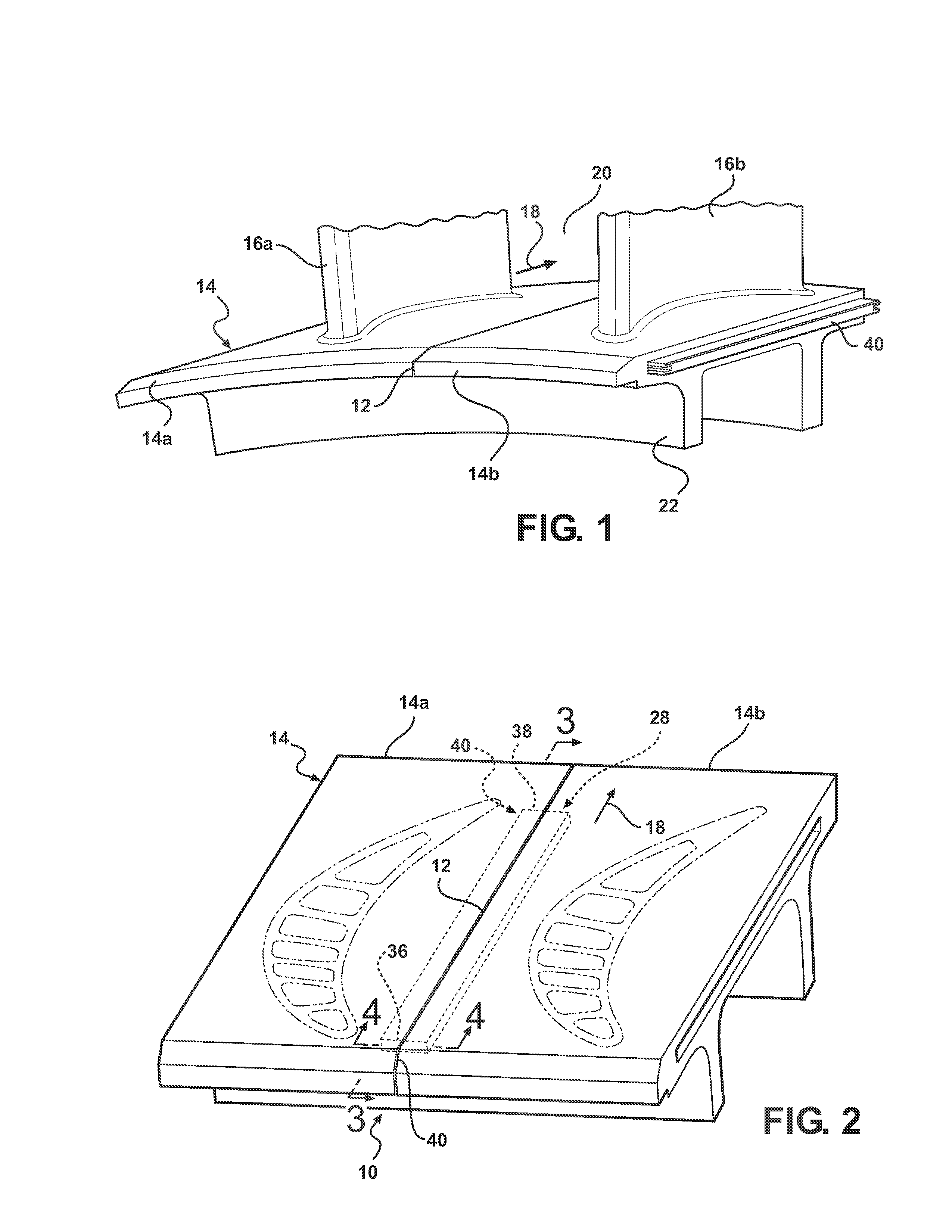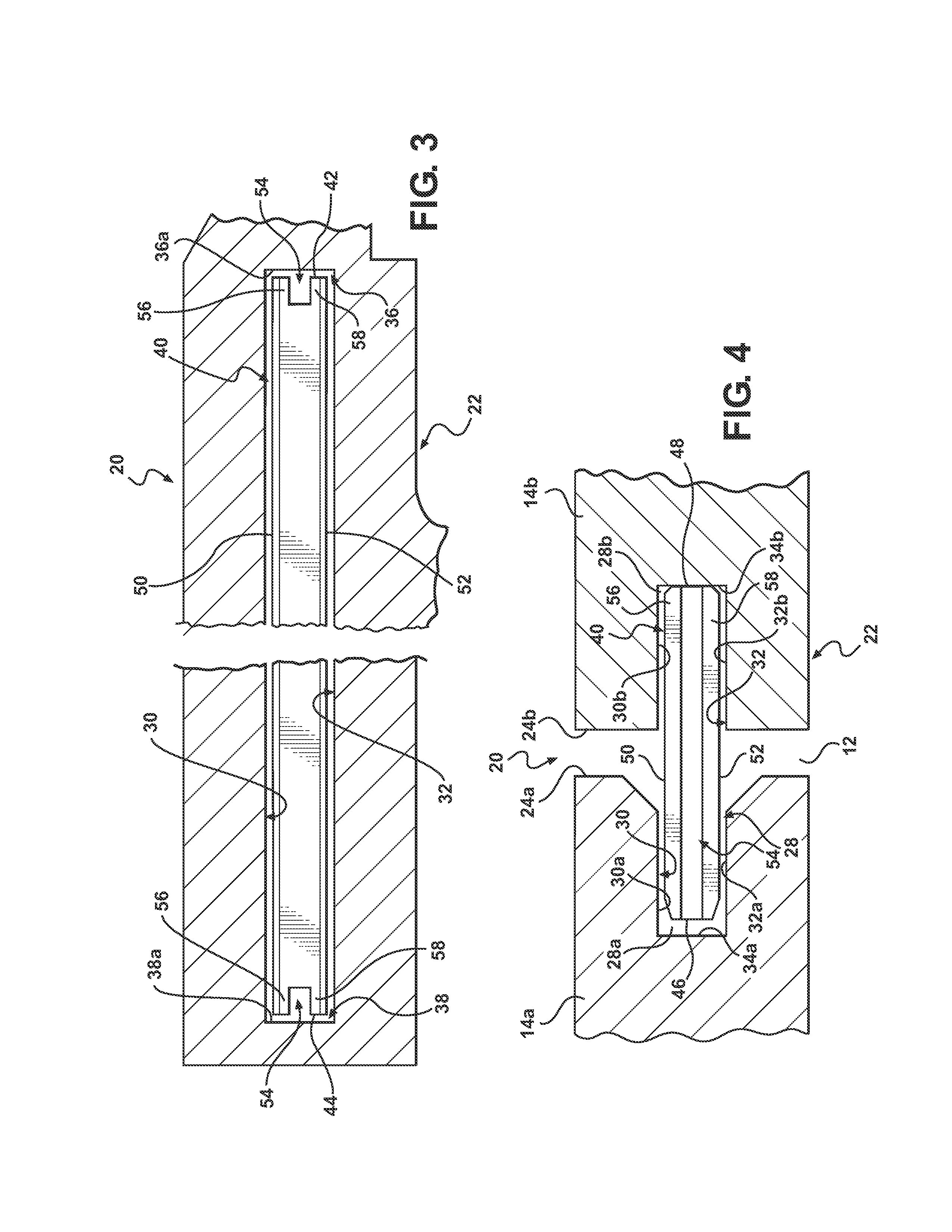Static seal for turbine engine
a turbine engine and seal technology, applied in the field of seals, can solve problems such as detriment to engine performance, and achieve the effect of minimizing gas leakage and minimizing gas leakag
- Summary
- Abstract
- Description
- Claims
- Application Information
AI Technical Summary
Benefits of technology
Problems solved by technology
Method used
Image
Examples
Embodiment Construction
[0015]In the following detailed description of the preferred embodiment, reference is made to the accompanying drawings that form a part hereof, and in which is shown by way of illustration, and not by way of limitation, a specific preferred embodiment in which the invention may be practiced. It is to be understood that other embodiments may be utilized and that changes may be made without departing from the spirit and scope of the present invention.
[0016]As seen in FIGS. 1 and 2, the present invention is directed to a seal structure 10 for sealing gaps 12 between adjacent first and second components, such as first and second turbine vane shroud segments 14a, 14b. The shroud segments 14a, 14b collectively form a shroud 14 in an engine, such as a gas turbine engine. The first and second shroud segments 14a, 14b may be associated with respective stationary vanes 16a, 16b. The shroud 14 defines an inner portion of a gas path for an axial hot gas flow 18, and forms a barrier separating ...
PUM
 Login to View More
Login to View More Abstract
Description
Claims
Application Information
 Login to View More
Login to View More - R&D
- Intellectual Property
- Life Sciences
- Materials
- Tech Scout
- Unparalleled Data Quality
- Higher Quality Content
- 60% Fewer Hallucinations
Browse by: Latest US Patents, China's latest patents, Technical Efficacy Thesaurus, Application Domain, Technology Topic, Popular Technical Reports.
© 2025 PatSnap. All rights reserved.Legal|Privacy policy|Modern Slavery Act Transparency Statement|Sitemap|About US| Contact US: help@patsnap.com



